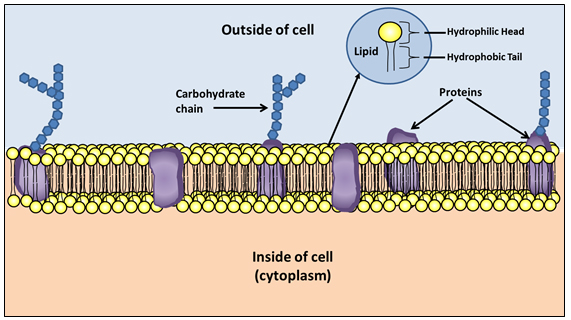
In order for cells to survive, they must be able to take in nutrients and get rid of waste. Cell membranes are either selectively permeable or semi-permeable. This means that the membranes allow certain molecules to pass through and prevent others from crossing the membrane.

Cell membranes are almost always made up of a double-layered sheet called the lipid bilayer. The lipid bilayer gives cell membranes a flexible structure that forms a strong barrier between the cell and its surroundings. The head or round part of the lipid is hydrophilic, or water loving. The tail of the lipid is hydrophobic or water fearing. A hydrophobic molecule is repelled by water. Hydrophobic molecules often cluster together when dropped in water, just as oil does.
Protein molecules are embedded in the lipid bilayer of most cell membranes. Carbohydrate molecules are attached to many of these proteins. Scientists describe the cell membrane as the fluid mosaic model. The word “fluid” comes from the fact that the protein molecules in the lipid bilayer can move around and "float" among the lipids. The word “mosaic” is used because so many different kinds of molecules make up the cell membrane. The proteins serve as channels and pumps that help move material across the membrane. Many carbohydrate molecules act like chemical identification cards that allow individual cells to identify one another.
![]() Watch this short video to learn more about the cell membrane.
Watch this short video to learn more about the cell membrane.
Source: Fluid Mosaic Model of the Cell Membrane, pisgahscience, YouTube